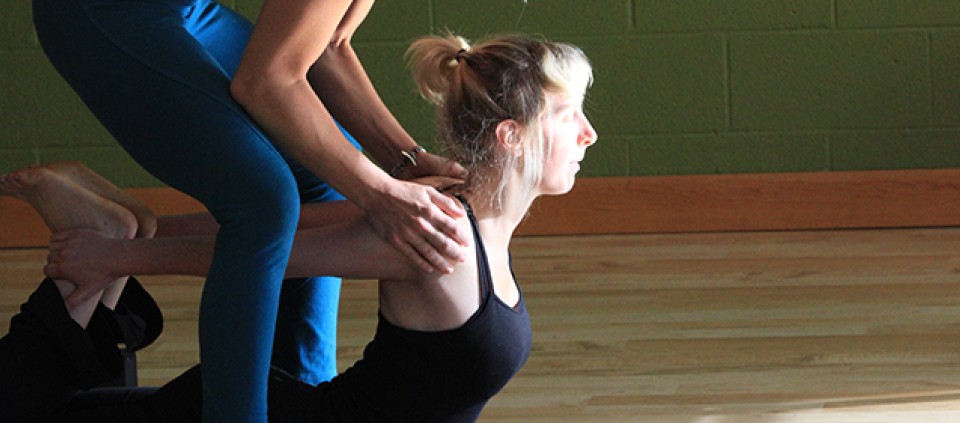Yoga Assists and the Power of Connection

We are not a touchy-feely culture. When we greet someone we don’t know well, we typically nod and smile, or maybe shake hands. How many people do you hug on a daily basis? How often do you experience physical touch given with intention and caring?
I had a student who came to my Monday-night class every week for years. One day, she stayed after class to talk with me, and finally revealed why she’d been such a loyal student: I was the only person who touched her, sometimes for weeks on end.
I was stunned. I’d never even considered this possibility. But then I really looked at her, and saw a 40-year-old woman who—while vibrant and busy, with a thriving career—was single, with no pets or children and little time for socializing. Her family lived a thousand miles away and, when she got together with friends, a cursory hug was not enough to satisfy her need for human contact.
Touching others is an essential part of our health and well-being. Except perhaps for those with severe personality disorders, every person on this planet must connect, and physical touch is a critical part of that. Connection gives purpose and meaning to our lives. Without it, we suffer greatly: studies have shown that lack of human contact can result in a host of physical and mental issues.
In South America, a big kiss and hug are waiting for you, no matter who you meet. In China, people regularly walk down the street holding hands in friendship. But it’s not always easy to find this connection in American culture, particularly if you’re single, or if your intimate relationships do not involve touch.
Hands-on assisting by a yoga teacher, when done skillfully and correctly, can be a powerful way to develop trust and connection. Assists are a form of physical contact that allows student and teacher to create a relationship of touch that is safe and nurturing. Romantic emotions and sexual feelings do not enter into this. Rather, assists provide support for students to practice surrender and move beyond their self-imposed boundaries.
Assists do not disempower students. Through hands-on adjustments, teachers can show students what’s possible and, once we’ve shown them, they have the tools to return to this new place on their own. Ultimately, assists are meant to facilitate independence and the evolution of a student’s practice. Skillful physical adjustments can transform a practice in a way that a verbal assist cannot.
I’ve seen it time and time again: The student fearful of doing Wheel pose is assisted into a glorious backbend. The student stuck in a cramped Half Moon pose is assisted into one that’s easier and more relaxed, and now it’s her favorite posture. The student who can’t let go and relax in Savasana is given assists to release his hips, and finally relaxes and falls into a restful state—perhaps the first he’s experienced in years. When teachers serve it up right, the yoga will always do its job.
It’s critical that we understand the power of physical assists, and take them very seriously, as we don’t want any crossed wires, mixed emotions, or misjudgments to come into play. Teachers need to educate themselves on how to do proper adjustments, and discern when an assist serves the student’s highest good. When it does, it can be the catalyst for far more than nailing Crow pose—it can be the gateway to a deeper understanding of yoga, an opportunity to surrender that a student may not have in other parts of his or her life, and a gift of safe and nurturing connection.
© Kripalu Center for Yoga & Health. All rights reserved. To request permission to reprint, please e-mail editor@kripalu.org.
Alanna Kaivalya, PhD, often referred to as the “Yoga Doctor,” helps yoga teachers embody their knowledge, up-level their skills, and create more impact in the world.
Full Bio and Programs